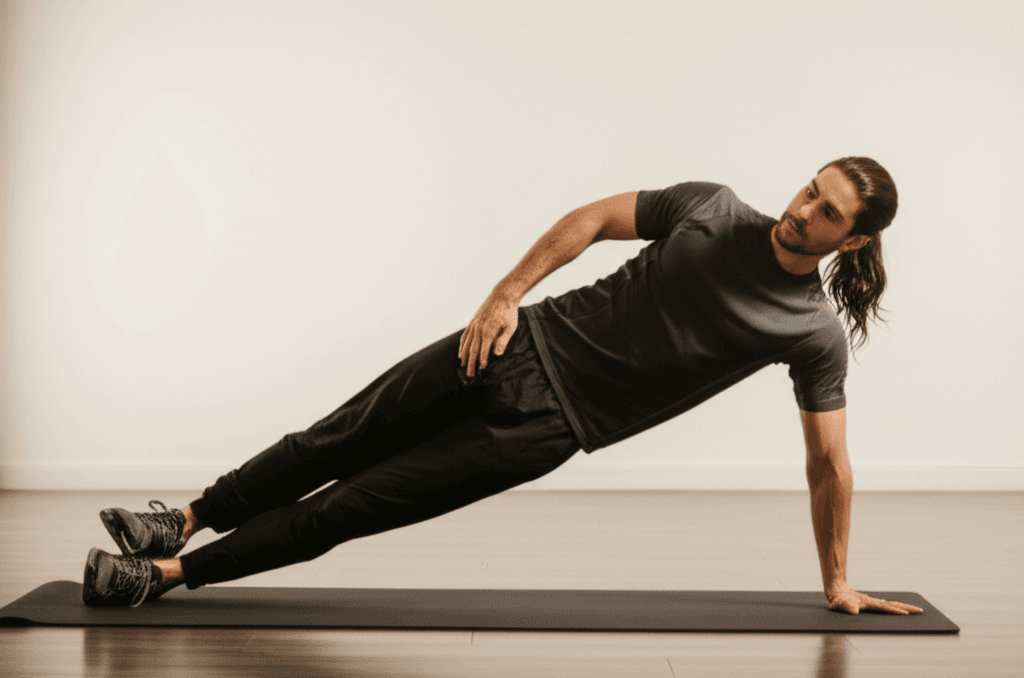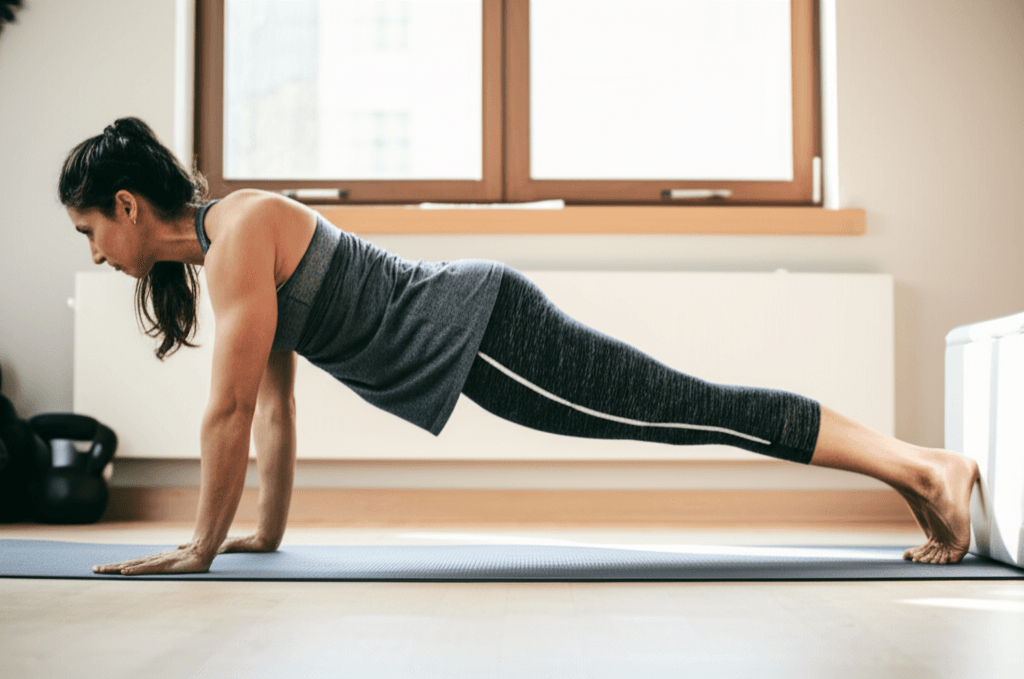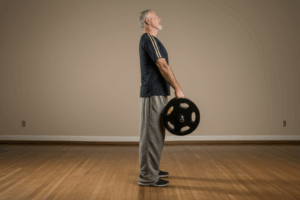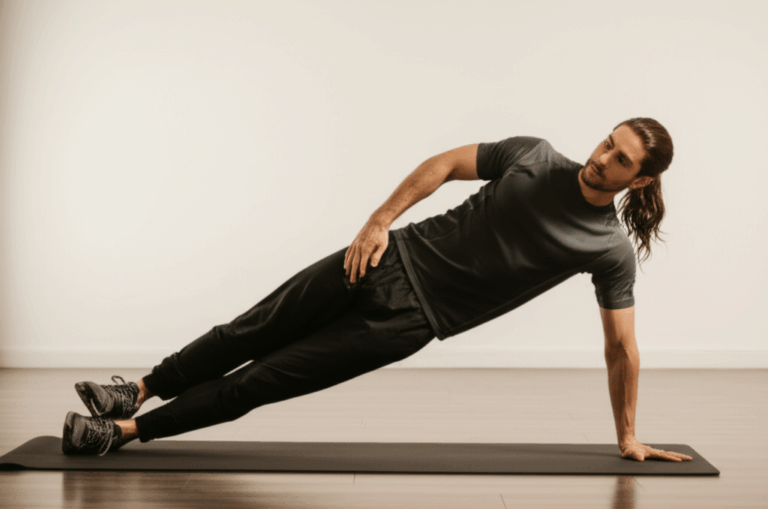As a fitness enthusiast, I’m always looking for new ways to challenge my body and refine my strength. In the ever-evolving landscape of exercises, the Copenhagen plank has been making waves, heralded for its targeted benefits beyond the traditional core workout. Intrigued by claims of enhanced hip stability, stronger inner thighs, and improved athletic performance, I decided to embark on a month-long challenge: performing a Copenhagen plank nearly every day. What unfolded over those 30 days was not only a test of physical endurance but also an insightful journey into a crucial, yet often overlooked, muscle group.

What Exactly Is the Copenhagen Plank?
Before diving into my personal experience, it’s essential to understand what makes the Copenhagen plank distinct. Often described as the “advanced cousin” of the side plank, this exercise specifically targets the adductor muscles (inner thighs) alongside the core and obliques. It’s a unilateral exercise, meaning it works one side of the body at a time, which is excellent for identifying and correcting muscle imbalances.
Proper Form and Setup
To execute a Copenhagen plank, you’ll need a stable elevated surface like a bench, chair, or sturdy box.
Here’s a breakdown of the proper technique:
- Lie on your side: Position yourself with your elbow directly under your shoulder, similar to a regular side plank. Your forearm should be flat on the floor for support.
- Elevate your top leg: Place the inside of your top ankle and foot on the elevated surface. Your other leg remains beneath the bench.
- Engage your core and lift: Ground through your elbow and the side of your supporting foot. Engage your core and lift your hips and knees off the floor, forming a straight line from your head to your heels.
- Suspend the bottom leg: Lift your bottom foot off the ground, hovering a few inches below the elevated top foot. In an easier modification for beginners, the bottom knee can remain bent and on the floor, or the entire bottom leg can rest on the ground for support.
- Hold: Maintain this straight body position as steadily as possible.
Analisse Ríos, C.S.C.S., a certified personal trainer, notes that “If done correctly and you’re really focusing on what it’s targeting [read: the core and thighs], the Copenhagen plank is really hard to hold for even 10 good seconds”.
Muscles Targeted
While planks are renowned for core activation, the Copenhagen plank brings specific muscle groups into the spotlight:
- Adductors (Inner Thighs): This is the primary target. The adductor longus, brevis, magnus, and gracilis are significantly engaged as they stabilize the elevated leg and work to pull the legs towards the body’s midline. Weak adductors are often linked to groin injuries, making this exercise excellent for injury prevention.
- Obliques: Both internal and external obliques are heavily engaged to stabilize the trunk and prevent the hips from sagging.
- Core Muscles: Beyond the obliques, the rectus abdominis, transverse abdominis, and multifidus also contribute to spinal stability and overall core strength.
- Hip Abductors: These muscles on the outer hip also play a role in stabilizing the hip and pelvis.
- Shoulder Stabilizers: Your shoulder stability is also challenged, particularly if performing the exercise on your palm instead of your forearm.

My Month-Long Copenhagen Plank Journey
My routine involved performing the Copenhagen plank nearly every day for a month. I started with three sets of 20-second holds on each side and progressively increased the hold time by 5-10 seconds each week, aiming for 45-second holds by the fourth week. I integrated these planks at the end of my strength training sessions, just before cardio, to ensure my stabilizers were fully engaged without pre-fatigue affecting my main lifts. On active recovery and rest days, I would still include them.
Week 1: The Initial Shock
The first few days were humbling. Despite considering myself to have a strong core and decent lower body strength, the Copenhagen plank felt profoundly challenging. The immediate burning sensation in my inner thighs and obliques was intense. Maintaining the “straight line from head to heels” proved difficult, with my hips wanting to sag, requiring constant, conscious engagement. I quickly understood why trainers emphasize its difficulty, even for short durations.
Week 2: Finding a Rhythm
By the second week, my body began to adapt. The initial shakes lessened, and I could hold the position with better form for slightly longer. I noticed a subtle improvement in my balance, not just during the plank but also in other movements like single-leg squats. This is likely due to the exercise’s ability to enhance proprioception and neuromuscular coordination.
Week 3: Noticing the Impact
This was when the more significant changes started to become apparent. My inner thighs, an area I rarely felt truly “worked” with other exercises, felt noticeably stronger and more engaged. Simple everyday movements, like stepping out of the car or maintaining balance on an unstable surface, felt more controlled. I also felt a greater sense of stability through my pelvis, which is a key benefit as the adductors contribute significantly to pelvic stability.
Week 4: The Surprising Result
As I entered the final week, pushing my hold times to 45 seconds per side, I expected a significant improvement in my core strength and inner thigh definition. These benefits certainly materialized; my obliques felt more robust, and my inner thighs were undeniably stronger. However, the most surprising and impactful result was the profound improvement in my overall posture and lower back comfort, particularly during prolonged sitting.
I spend a considerable amount of time at a desk, and often battle with mild lower back stiffness by the end of the day. During this challenge, I found myself sitting taller, with less slouching, and my lower back felt remarkably more supported. This wasn’t something I had actively focused on, but it was a clear, unsolicited benefit.
This unexpected outcome aligns with expert opinions, as the Copenhagen plank enhances core stability, which in turn provides better lumbar support and can reduce lower back pain. Furthermore, strengthening the hip adductors also aids pelvis movement, which directly influences spinal positioning and overall posture. The constant engagement of my adductors and core during the planks seemed to translate into a more intuitive ability to maintain an upright, stable body position throughout the day, even when not actively thinking about it.

Beyond the Month: Lasting Impressions
My month-long Copenhagen plank challenge was a resounding success, offering more than just stronger inner thighs and a more resilient core. The unexpected benefit of improved posture and reduced lower back discomfort has made this once-intimidating exercise a permanent fixture in my routine.
The Copenhagen plank is a versatile and highly effective exercise, particularly for strengthening the often-neglected adductor muscles and enhancing overall core stability. It’s a powerful tool for injury prevention, especially for groin strains, and can contribute to better athletic performance by improving change of direction and balance. For anyone looking to level up their core workout and discover holistic body benefits, the Copenhagen plank is an exercise well worth exploring.







